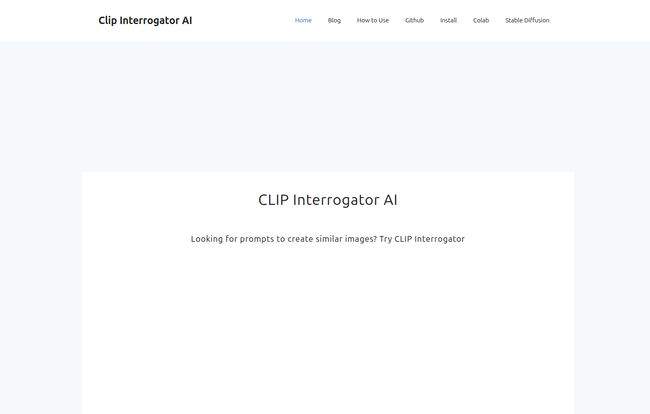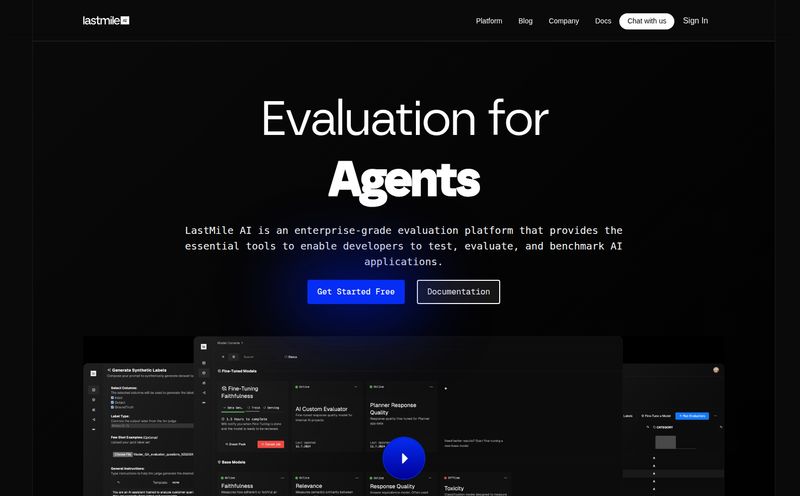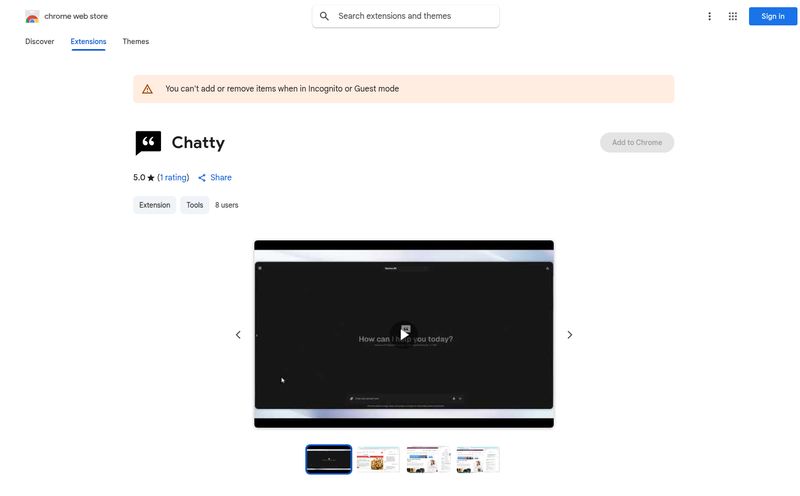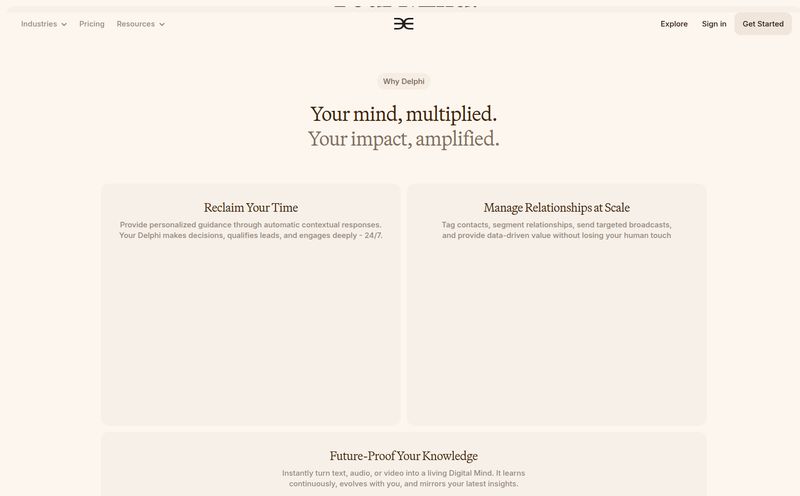We’ve all been there. Staring at that blinking cursor in the Midjourney Discord channel or the blank text box in your Stable Diffusion UI. You have this incredible image in your head—a cybernetic owl perched on a neon-drenched branch, rendered in the style of a classic oil painting. But the words... the words just aren't coming. You type “cyber owl, neon, oil painting,” and the AI spits back something that looks like a melted traffic cone had a baby with a parakeet. Frustrating, right?
For years, I've been wrestling with the dark art of promptcraft. It's a skill, a mix of poetry, technical jargon, and pure luck. I’ve seen some incredible AI art online and thought, “How on earth did they think to write that?” I've wished I could just point at a picture and have the magic words revealed to me.
Well, what if I told you that you basically can? I stumbled upon a tool a while back that has genuinely changed how I approach AI art generation. It’s called CLIP Interrogator, and it’s a bit like having a translator who speaks fluent “AI artist.”
So, What Exactly is CLIP Interrogator?
In the simplest terms, CLIP Interrogator does the exact opposite of an AI image generator. Instead of turning text into an image, it takes an image and turns it into a highly detailed text prompt. It's a form of reverse engineering. You feed it a picture you admire, and it “interrogates” it to figure out the most likely prompt that could create something similar.
I like to think of it as a sommelier for images. You give it a 'taste' of a picture, and it breaks down all the notes for you: “Ah, I’m sensing a hint of Greg Rutkowski, with a dominant base of Unreal Engine 5, and a finish of cinematic lighting with volumetric rays.” It gives you the recipe so you can go and cook up your own masterpiece.
This isn't just about copying, though. It's an incredible learning tool for understanding the vocabulary that AI models like Stable Diffusion respond to. It helps you discover new artist styles and technical terms you might never have thought to use.
How Does This Digital Sorcery Actually Work?
When I first used it, I was pretty blown away. The prompts it generated were complex and surprisingly accurate. So, me being the nerd I am, I had to look under the hood. It’s not just one single model doing all the work; it's a clever two-step process.
The First Draft: Enter BLIP
First, the tool uses a model called BLIP (Bootstrapped Language-Image Pre-training). BLIP's job is to look at the image and generate a basic, straightforward description. It’s the starting point. It might look at your image and say something simple like, “a close-up of a cat with blue eyes.” Accurate, but not very artistic. It’s the bland, unseasoned foundation.
Adding the Spice: The 'Flavor' Library
This is where the real magic happens. CLIP Interrogator then takes that basic description and starts adding “flavors.” These are curated lists of terms—artist names (like 'wlop' or 'artgerm'), art styles ('art nouveau', 'vaporwave'), mediums ('digital painting', 'macro photography'), and descriptive phrases ('dramatic lighting', 'highly detailed'). It tries combining the base caption with these various flavors to see what might fit.
The Final Taste Test: CLIP's Judgment
Finally, the CLIP model itself (the same tech that powers a lot of image generators) steps in. It takes all those combinations of the base caption and the flavors and ranks them. It's incredibly good at understanding the relationship between text and an image. It effectively asks, “Which of these phrases most accurately describes this picture?” The highest-scoring combination of flavors gets assembled into the final, detailed prompt. This is the “interrogation” part of the name—a meticulous process of questioning and refining until it has the best possible description. The result is often a rich, layered prompt you'd never dream up on your own.

Visit CLIP Interrogator AI
Why This is a Game-Changer for AI Creators
Okay, so it’s a cool piece of tech. But why should you, the busy creator, care? In my experience, its usefulness breaks down into a few key areas.
For one, it's the ultimate demystifier. You see an image you love on a site like Civitai or ArtStation and you’re stumped by its style. Just run a similar image through CLIP Interrogator. It might spit out the name of an obscure artist or a specific rendering engine that immediately cracks the code for you. It’s like getting a peek at the artist’s notes.
It’s also an amazing time saver. Instead of spending hours (and precious GPU credits) tweaking a prompt and getting nowhere, you can get a fantastic starting point in seconds. Even if the generated prompt isn’t perfect, it's almost always a better foundation than starting from scratch. I’ve found its output gives me a solid 80% of the way there, and then I can just add my own creative flourishes.
And maybe most importantly for us SEO and traffic folks, it’s completely free to use. There are web-based versions available on platforms like Hugging Face, so you dont even need a beast of a computer to run it. In an ecosystem where everything seems to have a subscription fee, a powerful and free tool is a rare find.
The Fine Print: A Few Things to Keep in Mind
Now, I don't want to paint a picture of this as some flawless magic wand. It's a tool, and like any tool, it has its quirks. For starters, the quality of the prompt you get is heavily dependent on the quality of the image you put in. A blurry, low-resolution image will yield a generic, unhelpful prompt. Garbage in, garbage out, as they say.
It also helps to have a little bit of knowledge about prompt engineering already. The tool gives you a list of ingredients, but you’re still the chef. You might need to reorder phrases, adjust weights, or remove terms that don’t quite fit the vision in your head. It’s an assistant, not an autonomous artist.
And sometimes, its suggestions are just… weird. It might misidentify a subject or suggest an artist that feels totally left-field. But honestly, I sometimes find that part of the fun. Some of my most interesting creations have come from its happy accidents. So dont be afraid to experiment!
Frequently Asked Questions About CLIP Interrogator
What is CLIP Interrogator?
CLIP Interrogator is a free AI tool that analyzes an image and generates a detailed text prompt that could be used to create a similar image in AI art generators like Stable Diffusion or Midjourney. It essentially reverse-engineers the creative process.
How do I use CLIP Interrogator?
The easiest way is through web-based applications hosted on platforms like Hugging Face. You simply upload your image, and the tool will process it and provide a text prompt. For more advanced users, it can also be run locally or via Google Colab notebooks.
Is CLIP Interrogator really free?
Yes, it's an open-source project and is free to use. While you might pay for compute time if you run it on a cloud service, the core software and many public web instances are available at no cost.
Can it perfectly replicate any image?
No, and that's not its primary goal. Due to the random 'seed' nature of AI image generation, an exact 1-to-1 replication is nearly impossible. Its purpose is to capture the style, subject, and composition of an image to give you a powerful starting prompt for your own creations.
What AI art models does it work best for?
It was primarily designed with CLIP-based models in mind, so it works exceptionally well for generating prompts for all versions of Stable Diffusion (including SDXL). While Midjourney uses its own systems, the descriptive language and artist suggestions from CLIP Interrogator are still incredibly useful for crafting Midjourney prompts.
My Final Thoughts
In the fast-moving world of AI, tools come and go. But CLIP Interrogator has earned a permanent spot in my digital toolbox. It's more than just a prompt generator; it's a teacher, a time-saver, and a source of endless inspiration. It bridges that frustrating gap between the vision in your mind and the words you need to bring it to life.
If you've ever felt that prompt-writer's block, I seriously encourage you to give it a try. Throw a few of your favorite images at it and see what it reveals. You might just uncover your next favorite artist or the secret ingredient your creations have been missing. Go play, experiment, and see what you can uncover.
Reference and Sources
- CLIP Interrogator on Hugging Face: Hugging Face - CLIP Interrogator Space
- Stable Diffusion Official Site: Stability.ai
- Original CLIP Paper by OpenAI: OpenAI - CLIP Research



